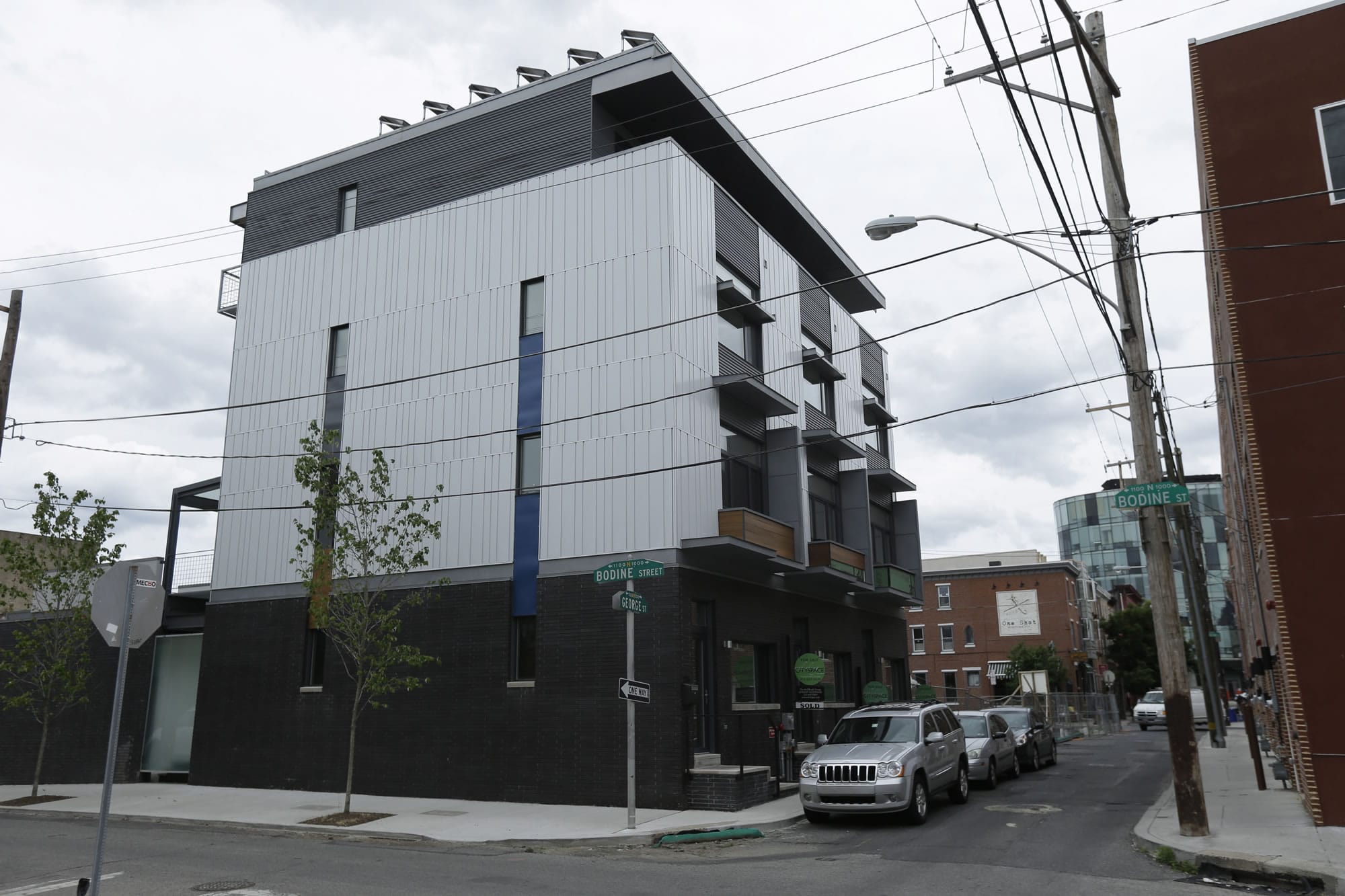PHILADELPHIA — After decades of near silence, a passive voice is making itself heard in American architecture.
So-called passive houses, which have been around in Europe but never really caught on in the United States, are basically built around the idea of making houses airtight, super-insulated and energy efficient.
The goal: a house that creates nearly as much energy as it consumes. Think of being able to keep your house warm without a traditional big furnace, cool with no air conditioning unit.
“At this point there’s no reason why any developer can’t now build this way,” said Tim McDonald, whose firm has designed and built energy-efficient buildings with eco-friendly materials for more than a decade in Philadelphia, and recently entered the world of passive housing.
Signature features often include thick outside walls and roofs, highly insulated windows and frames, and a south-facing orientation. The ventilation system pulls in fresh outdoor air and pumps out stale indoor air, but not before it’s used to heat or cool the incoming air to the same temperature.
Houses built this way can stay comfortable using 90 percent less energy than traditionally constructed homes, according to the Passive House Institute US, an Illinois-based certification, research and consulting group.
Though the idea was born in the U.S., the roughly 20,000 internationally certified passive houses worldwide are in Europe — predominantly Germany, Austria and Scandinavia. Fewer than 100 exist in the U.S. — but that’s changing, from chilly New England to toasty Arizona to muggy Baton Rouge, said Katrin Klingenberg, Passive House Institute US co-founder and executive director.
“People associate the passive house movement with Europe, but it comes out of the (American) oil embargo and energy crisis in the 1970s,” she said. “Then political change happened, (energy) prices came down … but in Europe that didn’t happen, so they had reason to continue the research.”
The shift was symbolized most clearly, perhaps, at the White House, when solar panels installed in 1979 during President Carter’s tenure were removed in 1986 under President Reagan’s administration. (The Obama administration promised in 2010 to put them back but hasn’t yet done so).
Retrofitting old buildings
Going passive isn’t solely the realm of new construction, either.
In McKeesport, outside Pittsburgh, a historic YMCA is being turned into a multi-unit passive building to house people at risk for homelessness. In New York City last year, Julie Torres Moskovitz’s firm Fabrica 718 retrofitted a 110-year-old Brooklyn brownstone into the city’s first certified passive house.
“There’s a whole movement,” said Torres Moskovitz, author of the new book “The Greenest Home” (Princeton Architectural Press, 2013), on super-insulated and passive house design. “It’s a hotbed in Brooklyn of doing these retrofits.”
McDonald’s firm, Onion Flats, first tackled a three-home, low-income housing development completed last fall — Pennsylvania’s first to be certified under guidelines set by the International Passive House Institute, based in Germany.
The stylish, 1,900-square-foot Belfield Homes in north Philadelphia have a heating and cooling system one-eighth the size of what similar traditionally built homes require, because they were built with an “airtight, super-insulated thermal envelope” that helps reduce energy use by 90 percent, McDonald said.
“Some passive houses are complex, but we took on the idea that we could do it … with everyday construction,” he said.
Onion Flats’ next effort is The Stables development, with three of 27 luxury townhouses completed and passive house certification pending. After that will be Ridge Flats, with shops and 130 apartments that McDonald’s firm wants to make the nation’s first passive-certified mixed-use project of its size.
Critics say passive houses work better in Europe because temperatures are relatively stable compared to many parts of the U.S. They also cite some pricey materials, and predict it will be tough convincing Americans to part with their thermostats and let their home regulate its own temperature.
The Stables homes are selling for about $700,000: That’s for a 2,500-square-foot luxury townhouse with four bedrooms, three baths, garage, garden, and energy-savvy bells and whistles such as solar panels, green roofs and airtight construction. McDonald said the price is comparable to nonpassive homes with similar amenities, in part because of cost savings from prefabricating the homes in modular sections and assembling them on-site.
“The way buildings have always been built is inefficient, so we’re tweaking the ways they’re built,” McDonald said. “If you do it the right way, it’s not more money.”
Sasha Best, her husband, and their 2- and 6-year-olds are moving from Manhattan’s financial district into one of The Stables townhouses in late June. After living for a year in a high-efficiency home in Germany, they returned last year to New York — where Hurricane Sandy’s destructive tear led them to rethink where they wanted to call home.
“We wanted a house that felt solid, that was large enough, in an urban environment that was part of a community, that feels like it’ll last 100 years,” she said. “We looked at 25 houses and within 10 seconds of walking into (our) house, we knew.”
Klingenberg said that in general, passive houses can cost 5 to 10 percent more to build. That’s largely because the specialty windows and other materials aren’t mass-produced, she said, but prices go down as they become easier to get.



